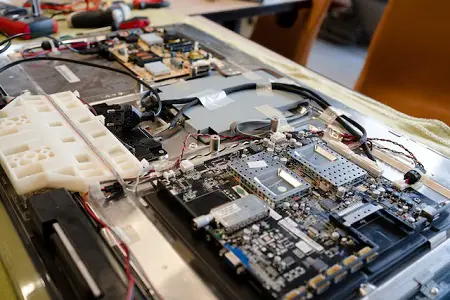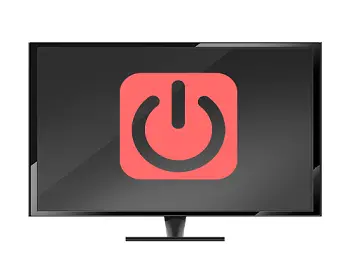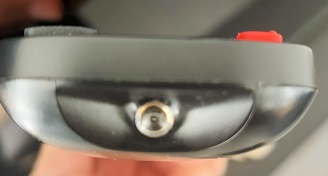Technological innovation is a constant at Philips, one of the most recognized brands in electronics for decades. However, and despite their expertise, Philips televisions are not immune to small technical failures. Here is an overview of the 7 most common problems encountered with Philips TVs and their repair solutions.
1. Philips TV no longer turns on
One of the most annoying problems for any TV owner is ending up with a device that simply refuses to turn on. You press the power button, wait impatiently… and nothing. No light, no sound, no sign of life. This is a scenario that many Philips TV owners have unfortunately experienced.
If your TV no longer turns on at all (light off) :
- Make sure the cord is securely plugged into the back of the TV and into the electrical outlet.
- Make sure the electrical outlet is functional. You can test by plugging in another device. If you are using a power strip, remove it.
- Examine the power cord for visible damage. If you have a spare, try replacing it to see if that fixes the problem.
If your TV doesn't turn on but the light stays on :
- Check that the remote control is not the culprit. Replace the batteries with new batteries.
- Do a reset of the TV, also called a “hard reset”. To do this, unplug the television from the electrical outlet, wait about a minute, then plug it back in. This can often resolve many small electronic bugs.
In case the previous steps do not work, I advise you to read our full article on this subject: my Philips TV no longer turns on, what should I do?
2. Flashing light problem on Philips TV
Your Philips TV does not turn on and appears to be in a state of distress: although the screen remains black, a red LED light flashes, as if to send you a coded message.
Try this solution first :
When the red LED on your Philips TV flashes and it does not turn on, the first thing to try is to electrical reset. This allows you to restart the TV system and remove small software faults potentially causing the problem. It could not be easier, unplug the television 2 a few minutes before plugging it back in. Then try turning it back on as usual.
This solution didn't work? Here are other avenues to explore:
- Check the power supply: Check that the power cord is securely plugged into the television and wall outlet. Try plugging the television into a different outlet to eliminate the possibility of a faulty outlet. Finally, remove power strip and extension cord if you use them and plug the TV directly into the outlet.
- Ensure adequate ventilation: Check that the TV's ventilation grilles are not blocked by dust or other objects. Clean them if necessary. Next, make sure the TV is placed in a well-ventilated area and is not surrounded by objects that could block air circulation.
- Unplug external devices : Try unplugging all devices to see if the problem is with one of them.
- Update the software via USB: Try updating your TV's software via a formatted USB drive. Download the latest update for your TV from the Philips Support website from a computer, then transfer it to a USB key, and plug the key into your TV. Then try turning it on. Even when turned off, the TV may detect the update and launch it automatically.
If the standby light on your Philips TV continues to flash, then the problem is caused by a broken component. In most cases that I have encountered, it is the power cord which has burned out or capacitor which is out of service. In rarer cases, it may be necessary to replace the power board or motherboard.

3. Philips TV turns on but the screen remains black
Another problem that often occurs with Philips TVs is that the device turns on, but the screen remains black or almost imperceptible. And there's nothing more frustrating than hearing the familiar sound of a show or movie playing, but seeing only a black screen. In fact, you know that your Philips TV is on, but it seems that the image has disappeared or deteriorated. This phenomenon, although common, can have several origins.
3 quick solutions but effective then available to you:
1. Check the connections:
First, inspect the HDMI or AV cables. Make sure they are plugged in properly on both sides. If you can, try a different cable to see if the problem persists. If replacement fixes the problem, the original cable was probably defective.
Then try changing the source by pressing the Input or Source button on your remote (for example, switch from TV source to HDMI source). This allows you to see if the problem is specific to an entry. If you can't see the screen at all, point a light source (e.g. phone flash) at it to see if an image appears.
2. Adjust display settings:
If you see an image appear slightly, go to your TV's settings, then adjust the brightness and contrast to see if the image reappears. If necessary, reset the display settings to their default values.
3. Reset the device:
Just like most TV problems, a hard reset can help. Then try unplugging the television from the outlet for 2 minutes, then plug it back in and try turning it back on.
Read also: 13 known TV issues resolved
Si you still have no image even though you have sound despite the troubleshooting steps mentioned above, then the problem certainly comes from a faulty internal component. If when you direct a lamp or flash towards the screen, you see a weak image, the fault comes from the backlight. Otherwise, if the screen is completely black, this could be due to a failure of the motherboard, T-Con card or one of the connectors which connect the cards.
4. Philips TV that cycles on and off
Picture the scene: you sit back and watch your favorite show, but your Philips TV seems to have other plans. It turns on, then turns off by itself, and this cycle repeats itself endlessly.

This phenomenon, known as “boot looping”, is a well-known problem but generally solvable thanks to a simple solution: updating the TV. If you have access to the TV menu during the brief periods when it is on, try performing a software update via its settings :
- On the remote control, press the button Home ou Settings.
- Access to All settings then Software update.
- Select Check for updates then check that Internet is selected.
- If an update is found, click Start and Accept for it to be carried out.
If you don't have time to access the update through the TV's Settings because it cycles off and on too quickly, do a update via USB stick :
- Insert a USB key on your computer.
- Format the USB drive on the system FAT32 files.
- Go to the Philips official website, heading “ Support"
- Enter the reference exact model of your TV (often indicated on a label below or behind the TV screen). Be careful not to make a mistake.
- Select Software Updates.
- Download the latest update available.
- Unzip the file when you transfer it to the USB flash drive. To do this, right-click on the “xx_xx.zip” file and select “Extract to”.
- Plug in the USB stick on your TV when it is on.
The update takes 5 to 15 minutes. Once the update is complete, turn the TV off and on again.
If the update did not restore a functional TV, then try these solutions:
As in the previous cases, a “hard reset” is often an effective step. Unplug your TV for 2 minutes, then plug it back in. Then try disconnecting external devices to see if one of them is responsible for the problem.
Third, make sure your TV is plugged directly into a wall outlet and not via a power strip, which could cause power fluctuations. Check that the outlet is working properly by plugging another device into it. If you use a voltage regulator, check that it is working properly.
Check that the Power button on the remote control is not pressed and causes a permanent contact giving information to the TV to turn off and on in a loop.
Finally, in case of accidental switching on and off problem persistent, reset your Philips TV to its factory settings. Please note, this step will erase all your personalized settings.
5. Philips TV slow to respond
When you turn on your Philips TV, change channels, open applications or navigate its menus, you will notice a excessive response time between your command and the reaction of the device. This slowness can make the viewing experience exasperating, as every action seems to take forever.
A solution that generally allows you to regain the full speed of the TV is to free up storage space. For that :
1 - Delete unused apps :
- Press the key Home of the remote control
- Go to Settings
- Select Manage applications and press OK
- Delete unnecessary applications by going to it, clicking OK and choosing uninstall
Note that some essential or original apps cannot be uninstalled.
2 - Clear application memory :
- Press the key Home of the remote control
- Go to Settings
- Click on Wireless and networks then Wired network ou Wi-Fi
- Press Clear internet memory and press the OK button on the remote control to confirm
- Switch the TV to standby and unplug its power cord
- Wait 1 minute and reconnect the power cord
Other easy and combined solutions can also solve this slowness problem:
Restart the TV. A simple reboot can sometimes free up snapshot memory and improve performance. Unplug the TV from the outlet for 2 minutes, then plug it back in and turn it on again.
Update the TV. Go to Settings and “Software Update”. Indeed, updates may include performance optimizations and bug fixes.
Disconnect peripheral devices. Indeed, a device may be incompatible or defective and slow down the operation of the television.
If these few solutions did not restore the fluidity of your Philips TV, I invite you to read other solutions and explanations in our dedicated article: My Philips TV is slow to respond, what should I do?
6. Philips TV turns off by itself
You're engrossed in an exciting movie or match, and suddenly, without warning, your Philips TV turns off by itself, as if someone had pressed the power button. More or less serious causes may be responsible. Here are the most common solutions to resolve the fault:
- Check the settings: Navigate the settings menu of your Philips TV and make sure that the timer, “energy saving”, presence detector (“Sleep timer”) or automatic power off function is deactivated.
- Check ventilation: Examine the TV's ventilation openings to make sure they are not blocked by dust or other debris. Place your hand near the openings to feel if hot air is escaping. If it's excessively hot, consider moving your TV to a better ventilated area.
- Examine the power supply: Make sure your TV is plugged directly into a wall outlet and not via an extension cord or power strip. Also try a different outlet to eliminate the possibility of a problem with the outlet itself.
- Update the software: Check that the software on your Philips TV is up to date.
- Reset settings: Perform a factory reset to fix possible software issues. Note that this will revert to default settings and clear your personal preferences.
7. Philips TV remote control no longer works
The last common problem with Philips TVs concerns its remote control. Indeed, whenShe no longer works, so your entire experience in front of the TV is disrupted. It's common for Philips remote controls to have issues, but most of these issues can be resolved with a few simple troubleshooting steps:
- Changing batteries: Replace the remote control batteries with new ones. Make sure to respect the polarity (+/-) when inserting.
- Elimination of interference: Check that there are no signal-emitting devices (such as some electronic toys or Bluetooth devices) near the TV or remote control. Then try using the remote in different areas of the room to see if the problem is related to a specific location.
- Checking the TV sensor: Make sure nothing is blocking the infrared sensor of your Philips TV. Clean it gently with a soft cloth.
- Resetting the remote control: Remove the batteries, press several buttons for about ten seconds, then reinsert the batteries.
- Test the operation of the remote control (only if it is infrared): Point the remote at your smartphone camera and press a button. If the remote control works, you should see a white or purple light at the infrared LED on the smartphone screen, indicating that the infrared signal is being emitted.

If you conclude that the Philips remote control is broken, consider purchasing a new Philips remote control or compatible universal remote control.

